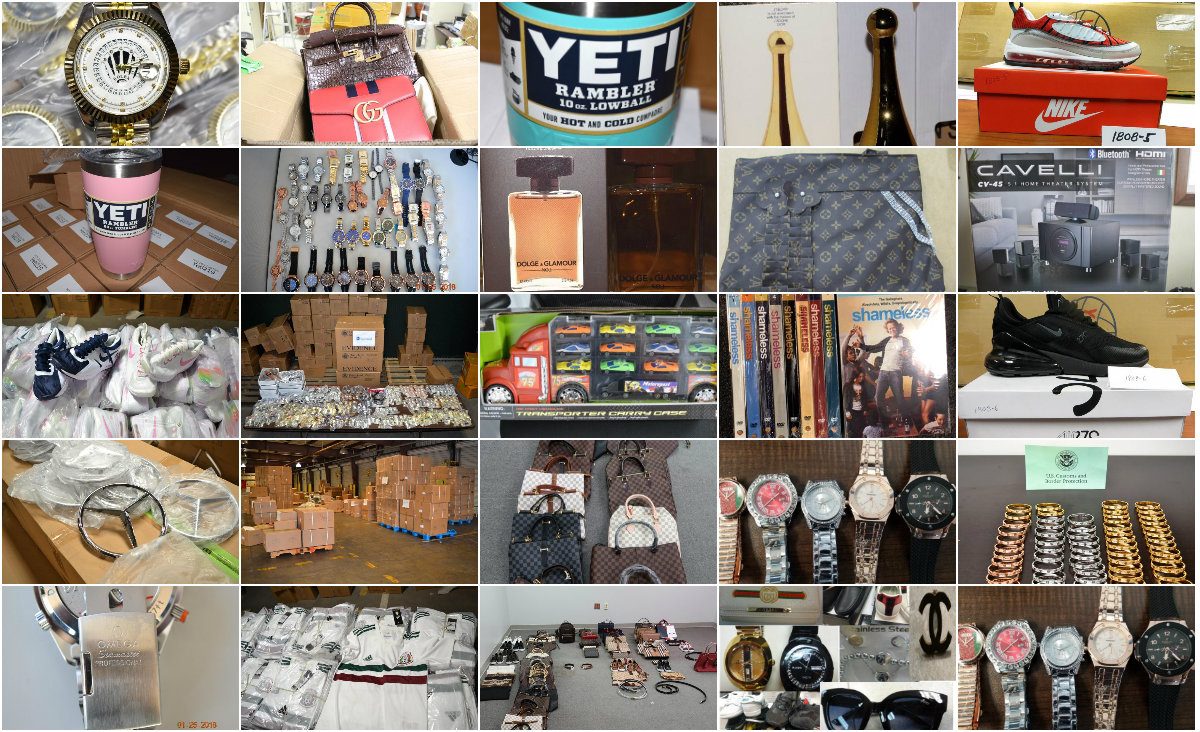President Donald Trump has asked his administration to come up with ways to crack down on the online sales of counterfeit products.
One of the ways could be increasing the liability of e-commerce platforms such as Amazon, Alibaba, and eBay for facilitating the sales, according to Peter Navarro, assistant to the president and director of the White House Office of Trade and Manufacturing Policy.
“This president has decided that it’s time to clean up this Wild West of counterfeiting and trafficking,” Navarro said in an April 3 conference call with reporters.
Globally, imports of counterfeits are worth nearly half a trillion dollars a year, according to 2011–2013 data analyzed by the Organisation for Economic Co-operation and Development and the European Union’s Intellectual Property Office. U.S. brands have been hit the hardest.

The U.S. government has nowhere near the manpower to check for fake products in the tens of millions of shipments that cross the U.S. borders every year, according to Navarro.
One of the main problems, he said, is that third parties involved in the sales, including the e-commerce platforms, payment processors, and customs brokers, “have essentially zero liability when it comes to the trafficking of these counterfeit goods.”
“That simply has to stop,” he said.
He warned such third parties that claims of no responsibility for policing the fakes will no longer fly.
“This is a warning shot across the bow to everybody engaged in this, that it is your job to police these matters and if you don’t clean it up, the government will,” he said.
Trump signed a memorandum April 3 that tasks the administration to produce a report on the scope of the problem as well as on ways to address it. The report is due by Oct. 30.
Evolving Problem
It used to be easier to spot fake goods, as they were usually sold at significantly lower prices, couldn’t quite imitate the originals, and were sold at less authoritative sites, such as by street vendors. That’s no longer the case, according to a January 2018 report (pdf) by the Government Accountability Office (GAO).
“Counterfeit goods and their packaging are becoming more sophisticated and closely resemble genuine goods, making it difficult for consumers, law enforcement, and sometimes even manufacturers to identify counterfeit goods,” the GAO report states, citing border protection and customs enforcement officials.
“When selling online, counterfeiters may post pictures of authentic goods on the websites where they are selling counterfeits and may post pseudonymous reviews of their products or businesses in order to appear legitimate.”
Even the prices of counterfeits are now often set near the level of the originals.
Fakes from China accounted for about half of those seized by authorities in fiscal years 2012–2016. Those shipped from Hong Kong represented more than a third.
Products most commonly seized in fiscal 2016 were apparel, consumer electronics, footwear, watches, and jewelry.
The fakery has reached the point of becoming a national security issue, Navarro said. Authorities have, for instance, “seized and investigated counterfeit goods, such as integrated circuits, destined for Department of Defense supply chains,” the GAO report said.
Organized crime groups have also dabbled in counterfeiting, the report stated.
“The high rate of return on investment and perceived low risk of prosecution associated with [intellectual property] crimes make counterfeiting attractive to criminal organizations as a lucrative source of revenue,” the GAO report stated, citing the National Intellectual Property Rights Coordination Center.
Solutions
The first step to solving the problem of counterfeits is getting data on its scope, Navarro said.
“We simply don’t know with any certainty how much counterfeiting is going on. … We really have to get to the bottom of that,” he said.
Meanwhile, agencies need to review the legal and regulatory framework to find ways to tighten enforcement and identify areas where the laws may need to change.
“We’re going to attack this on numerous fronts,” Navarro said.
He gave an example of an exemption that allows shipments declared for less than $800 to be admitted free of duty. The shippers then “don’t really have to fill out any forms” when crossing the border, “which is being exploited by counterfeiters,” Navarro said.
The Treasury has the power to change the exemption, though he clarified that “it would be premature” to take this step right away before the administration finishes its report.
The Justice Department, he said, will also review whether the current statutory regime is sufficient to go after counterfeiters.
“We need to be able to prosecute counterfeit traffickers,” Navarro said.

